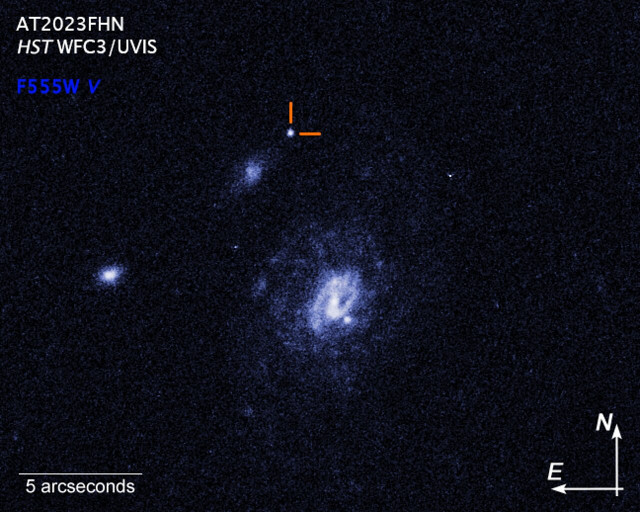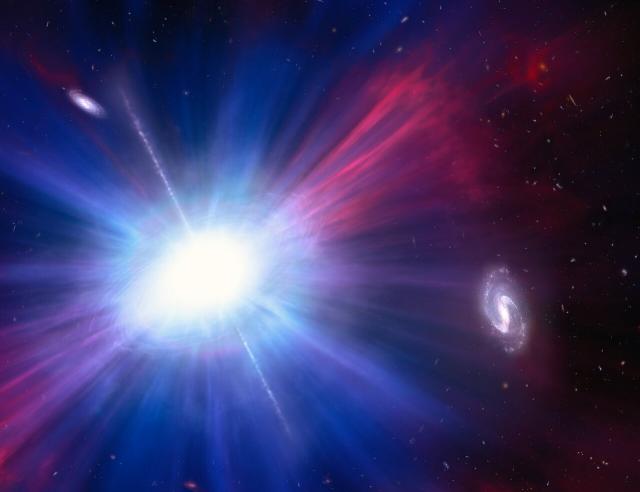
An article (link to the file in PDF format) being published in the journal “Monthly Notices of the Royal Astronomical Society” reports the observation of a Luminous Fast Blue Optical Transient (LFBOT), a rare type of cosmic explosion of still uncertain nature which was cataloged as AT2023fhn. A team of researchers used various telescopes to try to study one of the few phenomena of this type known so far but this brought more questions than answers because its origin was found far from any galaxy.
The top image (NASA, ESA, STScI, A. Chrimes (Radboud University)) shows AT2023fhn, indicated by the orange lines, together with some galaxies.
When the first example of a Luminous Fast Blue Optical Transient, cataloged as AT2018cow, was discovered, various possible interpretations were given of its origin. A few more such explosions, among the most powerful detected in visible light, were observed in recent years and it was suggested that they are a rare type of supernova. However, the unexpected location of the most recent such event appears to contradict this possibility.
The event cataloged as AT2023fhn and thus nicknamed “The Finch” was discovered by the Zwicky Transient Facility on April 10, 2023, and subsequently observed with various instruments in various electromagnetic bands. This led to the finding that it had the characteristics of a Luminous Fast Blue Optical Transient.
The Gemini Multi-Object Spectrograph (GMOS) instrument mounted on the Gemini South telescope allowed the temperature of AT2023fhn to be estimated at around 20,000° Celsius and provided useful information for calculating its distance to Earth and consequently its brightness.
The Hubble Space Telescope offers the resolution needed to locate the area where the AT2023fhn event originated. The surprise came when, unlike previous Luminous Fast Blue Optical Transients, Hubble located its origin between two galaxies, about 15,000 light-years from the nearest.
A massive star that generates a supernova has a short lifespan in astronomical terms, sometimes even just a few million years. Even tens of millions of years are too few for a star to travel so far from the galaxy in which it was born.
At this point, it appears that Luminous Fast Blue Optical Transients are not anomalous supernovae generated by massive stars but it’s possible that they are anomalous kilonovae. A kilonova is generated by the collision between two neutron stars and such an event was one of the most studied by astronomers in recent years. Some astronomers argue that if one of the two neutron stars is of the magnetar type, its very powerful magnetic field could greatly amplify the power of the explosion caused by their merger.
The researchers cannot rule out other explanations for AT2023fhn such as a tidal disruption event with the destruction of a star in a star cluster that isn’t visible to the instruments used. The location remains strange given that there should be several stars outside galaxies. For this reason, it will be necessary to conduct observations in the environment around events of this type to try to find commonalities as well as other Luminous Fast Blue Optical Transients to try to understand their nature.


